Sheeps bit – Wild flowers at the old slate quarry
Sheeps bit – Wild flowers
The Slate Quarry at (Ahenny, Windgap, Co. Kilkenny) is one of our best local locations for wild life and wild flowers – at this time of year. There are three or four old open quarry pits most of which now form small lakes, along with many heaps of slate that remained in place after all the good slate in the area had been removed. In the summer the lakes are used for swimming in.
I often visit and today I captured these blue sheep’s bit flowers at lunch time and they cover most of the tops of the old slate heaps. Natural blue wild flowers are one of natures rarest finds so it was a true pleasure to see such a large amount growing in one place.
Here are some details about these very special little plants ….
Sheep’s-bit
Scientific Name: Jasione montana
Irish Name: Duán na gcaorach
Family Group: Campanulaceae
Also known as Sheep’s-bit Scabious, the books say this is a rather variable plant and can easily be mistaken for a composite or a scabious, but theAlso known as Sheep’s-bit Scabious, the books say this is a rather variable plant and can easily be mistaken for a composite or a scabious, but the florets have a 5-toothed calyx and not a pappus. Also the anthers in this plant do not project – unlike those of Devil’s Bit Scabious. I hope this helps. It is a pretty little downy biennial which grows in rocky places, cliffs and heaths up to 40cm high. It has bright blue rounded flowers aggregated in a compact head (15-25mm) which is borne on a slender stem. Its leaves have wavy edges and are hairy, grey-green and short-stalked. The plant is on flower from May to September. This plant is a native and belongs to the family Campanulaceae.
I first identified this flower in Laragh, Co Wicklow in 1976 and photographed it in Glenmalure, Co Wicklow in 2006.
florets have a 5-toothed calyx and not a pappus. Also the anthers in this plant do not project – unlike those of Devil’s Bit Scabious. I hope this helps. It is a pretty little downy biennial which grows in rocky places, cliffs and heaths up to 40cm high. It has bright blue rounded flowers aggregated in a compact head (15-25mm) which is borne on a slender stem. Its leaves have wavy edges and are hairy, grey-green and short-stalked. The plant is on flower from May to September. This plant is a native and belongs to the family Campanulaceae.
I first identified this flower in Laragh, Co Wicklow in 1976 and photographed it in Glenmalure, Co Wicklow in 2006.
If you are satisfied you have correctly identified this plant, please submit your sighting to the National Biodiversity Data Centre
Beyond The Door – Poem by Clark Ashton Smith
Beyond The Door – Poem by Clark Ashton Smith
Alas! the evanescence of a dream,
That, like a rose, shall never blossom more!
A glimpse of unguessed things, and then the door
Of waking sense clangs to. Alas! the Gleam,
The visioned Secret and the Light supreme,
That one at moments nears, when, lo! the pall
Of veiling darkness drops and covers all –
The darkness of the daylight’s aureate beam!
Leaving but an elusive memory –
A heavenly cadence, a supernal word,
Never but half-recalled. In dreams are heard
Who knows what tidings from Eternity,
Transcendant, strange! Alas! we may not bring
Aught past the gateway of Awakening!
Clark Ashton Smith
Ireland’s Historic Buildings : Pearse’s Cottage (Teach an Phiarsaigh),Rosmuc, County Galway
Patrick Henry Pearse (also known as Pádraig or Pádraic Pearse; Irish: Pádraig Anraí Mac Piarais; An Piarsach) was born in Dublin on the 10th of November 1879 and he died in Kilmainham Gaol(Jail), county Dublin on the 3rd of May 1916. He was primarily an Irish teacher but was also a great barrister, poet, writer and original Irish nationalist. He was one of the leaders of the Easter Rising in 1916. Following his execution along with fifteen others, Pearse came to be seen by many as the embodiment of the rebellion.
Patrick Pearse’s Cottage at Ros Muc, county Galway in the heart of the Conamara Gaeltacht, ( an Irish speaking and strongly Irish cultural area) was used by Patrick Pearse (1879 – 1916), while he spent time teaching and marking students papers.
The cottage and its interior, although burned during the War of Independence, has been perfectly reconstructed and contains an exhibition and a number of momentous of Pearse’s life.
The cottage was Pearse’s summer residence between 1903 and 1915. It was also as a summer school for his pupils from St Enda’s in Dublin where he worked during the main Academic year.
The historic cottage, has been developed as a national monument and tourist attraction as part of the 1916 centenary commemorations; and is a key ‘discovery point’ on the Wild Atlantic Way route.
I was lucky enough to visit the cottage last week and enjoyed my time here very much, the staff helped greatly when it came to understanding the life of this great Irish man and his time spent here.
If your in county Galway, you just have to call in and spend some valuable time here !
Pearse’s Cottage (Teach an Phiarsaigh), County Galway, Gallery
Kilcooley Abbey, County Tipperary. The silence of the Abbey in the field.
Kilcooley abbey is located near the town of Thurles in county Tipperary, it was founded by the Cistercians in 1182AD when the lands were granted to them by Donal Mor O’Brien. It became one of the three great Abbeys in the local area, the other two being Jerpoint and Holy Cross.
It would have been in use at least until the dissolution of Abbeys in the 1500’s and it now sits hidden away on the lands of the Kilcooley estate.
I always love visiting this abbey as its one of the most peaceful of places you could wish of, surrounded by woodlands and farms, very little sound from the modern world penetrates the field its located in. As such you can sense the times when this abbey was first lived in and used on a daily basis as a refuge and place of worship for the Cistercian monks who would have lived here.
If there are such things a Ghosts then how could they not be found still living within and around the grounds of this great Abbey.
Ghost House in the Irish landscape, Poem by Robert Frost, 1874 – 1963
Ghost House
Robert Frost, 1874 – 1963
I dwell in a lonely house I know
That vanished many a summer ago,
And left no trace but the cellar walls,
And a cellar in which the daylight falls
And the purple-stemmed wild raspberries grow.
O’er ruined fences the grape-vines shield
The woods come back to the mowing field;
The orchard tree has grown one copse
Of new wood and old where the woodpecker chops;
The footpath down to the well is healed.
I dwell with a strangely aching heart
In that vanished abode there far apart
On that disused and forgotten road
That has no dust-bath now for the toad.
Night comes; the black bats tumble and dart;
The whippoorwill is coming to shout
And hush and cluck and flutter about:
I hear him begin far enough away
Full many a time to say his say
Before he arrives to say it out.
It is under the small, dim, summer star.
I know not who these mute folk are
Who share the unlit place with me—
Those stones out under the low-limbed tree
Doubtless bear names that the mosses mar.
They are tireless folk, but slow and sad—
Though two, close-keeping, are lass and lad,—
With none among them that ever sings,
And yet, in view of how many things,
As sweet companions as might be had
Time and Eternity By : Emily Dickenson, (1896)
One need not be a chamber to be haunted,
One need not be a house;
The brain has corridors surpassing
Material place.
Far safer, of a midnight meeting
External ghost,
Than an interior confronting
That whiter host.
Far safer through an Abbey gallop,
The stones achase,
Than, moonless, one’s own self encounter
In lonesome place.
Ourself, behind ourself concealed,
Should startle most;
Assassin, hid in our apartment,
Be horror’s least.
The prudent carries a revolver,
He bolts the door,
O’erlooking a superior spectre
More near.
Cutting Turf , Irish landscape History
On Wednesday I posted some picture showing the results of a Wildfire on the bog lands of Littleton in country Tipperary, having done so I just wanted to share some more images from another Bog land in county Waterford and share some of the history of these amazing places along with some details about the history of turf cutting in Ireland.
The Irish tradition of turf cutting
In the past, Irish people heated their homes and cooked their food using turf taken from from the bog as fuel. Turf was cut from the bog by hand, using a two-sided spade called a sleán. Entire families often helped to save the turf on the bog.
Saving the turf involved turning each sod of turf to ensure the sun and wind could help in the drying process. The turf was then placed upright or ‘footed’ for further drying. Footing the turf was a back-breaking job and involved placing five or six sods of turf upright and leaning against each other. Finally, the turf was brought home and stored in sheds or ricks.
In the midlands and the West of Ireland, the tradition of using turf or peat as fuel has continued in many homes.The turf is mainly cut by machine nowadays, but saving the turf still involves lots of work and requires good weather.
Film Friday, Swanage Steam Railway – Traveling back to the 1940’s
These images are all taken using a Nikon FM2n, loaded with Ilford XP2 Super black and white film. I used a black and white film on the day I visited the wonderful Swanage steam railway project as I felt it was perfect to capture the atmosphere of a 1940’s experience.
Sometimes when your out for the day with a camera, its the experience of finding subjects that’s the most enjoyable part of the day, on this day however it was the enjoyment of taking a trip into the past and enjoying the feeling that you had slipped back into the countryside of the 1940’s, taking these images was just a process of recording the moments.
Here is a small introduction to this great project.
Welcome to Swanage Railway
The Swanage Railway offers a more intensive heritage steam and diesel timetable train service than virtually any other preserved railway.
Steam and diesel galas, Family events plus regular Evening Dining and Sunday Lunch services complement themed events such as our highly popular Santa Special trains during the run up to Christmas.
Our award-winning standard gauge preserved steam railway is located in Dorset with easy access from neighbouring Hampshire and the South of England. Visitors can experience a unique journey through six miles of beautiful scenery passing the magnificent ruins of Corfe Castle, travelling down to the blue flag beach at Swanage.
You can even drive and fire your own steam train thanks to our one-hour footplate taster experiences
Swanage Steam railway a Film Gallery
Elegy Written in a Country Churchyard By Thomas Gray
Elegy Written in a Country Churchyard
By Thomas Gray
The curfew tolls the knell of parting day,
The lowing herd wind slowly o’er the lea,
The plowman homeward plods his weary way,
And leaves the world to darkness and to me.
Now fades the glimm’ring landscape on the sight,
And all the air a solemn stillness holds,
Save where the beetle wheels his droning flight,
And drowsy tinklings lull the distant folds;
Save that from yonder ivy-mantled tow’r
The moping owl does to the moon complain
Of such, as wand’ring near her secret bow’r,
Molest her ancient solitary reign.
Beneath those rugged elms, that yew-tree’s shade,
Where heaves the turf in many a mould’ring heap,
Each in his narrow cell for ever laid,
The rude forefathers of the hamlet sleep.
The breezy call of incense-breathing Morn,
The swallow twitt’ring from the straw-built shed,
The cock’s shrill clarion, or the echoing horn,
No more shall rouse them from their lowly bed.
For them no more the blazing hearth shall burn,
Or busy housewife ply her evening care:
No children run to lisp their sire’s return,
Or climb his knees the envied kiss to share.
Oft did the harvest to their sickle yield,
Their furrow oft the stubborn glebe has broke;
How jocund did they drive their team afield!
How bow’d the woods beneath their sturdy stroke!
Let not Ambition mock their useful toil,
Their homely joys, and destiny obscure;
Nor Grandeur hear with a disdainful smile
The short and simple annals of the poor.
The boast of heraldry, the pomp of pow’r,
And all that beauty, all that wealth e’er gave,
Awaits alike th’ inevitable hour.
The paths of glory lead but to the grave.
Nor you, ye proud, impute to these the fault,
If Mem’ry o’er their tomb no trophies raise,
Where thro’ the long-drawn aisle and fretted vault
The pealing anthem swells the note of praise.
Can storied urn or animated bust
Back to its mansion call the fleeting breath?
Can Honour’s voice provoke the silent dust,
Or Flatt’ry soothe the dull cold ear of Death?
Perhaps in this neglected spot is laid
Some heart once pregnant with celestial fire;
Hands, that the rod of empire might have sway’d,
Or wak’d to ecstasy the living lyre.
But Knowledge to their eyes her ample page
Rich with the spoils of time did ne’er unroll;
Chill Penury repress’d their noble rage,
And froze the genial current of the soul.
Full many a gem of purest ray serene,
The dark unfathom’d caves of ocean bear:
Full many a flow’r is born to blush unseen,
And waste its sweetness on the desert air.
Some village-Hampden, that with dauntless breast
The little tyrant of his fields withstood;
Some mute inglorious Milton here may rest,
Some Cromwell guiltless of his country’s blood.
Th’ applause of list’ning senates to command,
The threats of pain and ruin to despise,
To scatter plenty o’er a smiling land,
And read their hist’ry in a nation’s eyes,
Their lot forbade: nor circumscrib’d alone
Their growing virtues, but their crimes confin’d;
Forbade to wade through slaughter to a throne,
And shut the gates of mercy on mankind,
The struggling pangs of conscious truth to hide,
To quench the blushes of ingenuous shame,
Or heap the shrine of Luxury and Pride
With incense kindled at the Muse’s flame.
Far from the madding crowd’s ignoble strife,
Their sober wishes never learn’d to stray;
Along the cool sequester’d vale of life
They kept the noiseless tenor of their way.
Yet ev’n these bones from insult to protect,
Some frail memorial still erected nigh,
With uncouth rhymes and shapeless sculpture deck’d,
Implores the passing tribute of a sigh.
Their name, their years, spelt by th’ unletter’d muse,
The place of fame and elegy supply:
And many a holy text around she strews,
That teach the rustic moralist to die.
For who to dumb Forgetfulness a prey,
This pleasing anxious being e’er resign’d,
Left the warm precincts of the cheerful day,
Nor cast one longing, ling’ring look behind?
On some fond breast the parting soul relies,
Some pious drops the closing eye requires;
Ev’n from the tomb the voice of Nature cries,
Ev’n in our ashes live their wonted fires.
For thee, who mindful of th’ unhonour’d Dead
Dost in these lines their artless tale relate;
If chance, by lonely contemplation led,
Some kindred spirit shall inquire thy fate,
Haply some hoary-headed swain may say,
“Oft have we seen him at the peep of dawn
Brushing with hasty steps the dews away
To meet the sun upon the upland lawn.
“There at the foot of yonder nodding beech
That wreathes its old fantastic roots so high,
His listless length at noontide would he stretch,
And pore upon the brook that babbles by.
“Hard by yon wood, now smiling as in scorn,
Mutt’ring his wayward fancies he would rove,
Now drooping, woeful wan, like one forlorn,
Or craz’d with care, or cross’d in hopeless love.
“One morn I miss’d him on the custom’d hill,
Along the heath and near his fav’rite tree;
Another came; nor yet beside the rill,
Nor up the lawn, nor at the wood was he;
“The next with dirges due in sad array
Slow thro’ the church-way path we saw him borne.
Approach and read (for thou canst read) the lay,
Grav’d on the stone beneath yon aged thorn.”
Irish Landscape Images : The Hell Fire Club, Mount Pelier Hill

The Hell Fire Club
Mount Pelier Hill
County Dublin, Ireland
Irish Landscape Images
Nigel Borrington 2018
The Hell Fire Club on Mount Pelier Hill
William Conolly’s Hunting Lodge
The building now known as the Hell Fire Club was built around 1725 as a hunting lodge by William Conolly, the Speaker of the Irish House of Commons. It was named Mount Pelier by Conolly but over the years has also been known as “The Haunted House”, “The Shooting Lodge”, “The Kennel”, and “Conolly’s Folly”. It was one of several exclusive establishments using the name Hellfire Club that existed in Britain and Ireland in the 18th century.
While the building has a rough appearance today, the architecture is of a Palladian design. The upper floor consists of a hall and two reception rooms. On the eastern side, there was a third, timber-floored, level where the sleeping quarters were located. On the ground floor is a kitchen, servants’ quarters and stairs to the upper floors. The entrance, which is on the upper floor, was reached by a long flight of stairs which is now missing. At each side of the building is a room with a lean-to roof which may have been used to stable horses. A stone mounting block to assist people onto their horses can be seen on the eastern side. To the front there was a semi-circular courtyard, enclosed by a low stone wall and entered by a gate.
The house faces to the north, looking over Dublin and the plains of Meath and Kildare, including Conolly’s primary residence at Castletown House in Celbridge. The grounds around the lodge consisted of a 1,000-acre (4.0 km2; 1.6 sq mi) deer park. The identity of the architect is unknown: the author Michael Fewer has suggested it may have been Edward Lovett Pearce (1699–1733) who was employed by Conolly to carry out works at Castletown in 1724.
There was a prehistoric burial site at the summit of Mount Pelier Hill and stones from it were used in the construction of the lodge. A nearby standing stone was also used for the lintel over the fireplace. Shortly after its completion, a great storm blew the original slate roof off. Local superstition held that this was the work of the Devil, an act of revenge for disturbing the ancient cairn. Conolly had the roof replaced with an arched stone roof constructed in a similar fashion to that of a bridge. This roof has remained intact to the present day, even though the building has been abandoned for over two centuries and despite the roof being set alight with tar barrels during the visit of Queen Victoria to Ireland in 1849. There is little evidence that the lodge was put to much use. Conolly himself died in 1729.
Irish Archaeology, Brownshill Portal Tomb, Co. Carlow
Dating from the Early Neolithic period (4000-3000 BC), Brownshill dolmen in Co. Carlow is one of the most impressive megalithic monuments in Ireland. The capstone is truly massive and has to be seen in person to be really appreciated. It is estimated to weigh in excess of 150 tonnes and is believed to be one of the heaviest capstones in Europe. It is still not certain how it was raised up, but it may have involved a combination of wooden rollers, ropes and man/animal power, aided by ramps of earth or stone.
The Brownshill dolmen is classified as a portal tomb by archaeologists and there are approximately 174 of these monuments in the country. The tombs generally consist of two large portal-stones defining the entrance and a back-stone, all of which support the cap-stone. Although Brownshill has never been excavated, finds are known from other portal tombs. These include burnt and unburnt human bone, pottery and flint artefacts as well as personal items such as bone pins and beads.
One of the very few portal tombs that has been investigated by archaeologists is Poulnabrone in Co. Clare (Lynch 2014). At this site the remains of twenty two people were uncovered inside the tomb, including sixteen adults and six children. Of these bodies only eight could be sexed and these were equally split between males and females. The bones were found in a largely disarticulated state and this suggests that the human remains had undergone a complex burial ritual. It appears that the dead were initially placed in the tomb as complete bodies and allowed to decompose. Then at a later date certain body parts were removed, in particular the skulls and long bones. The reasoning behind this is uncertain, although it may have been related to some form of ancestor worship, where the dead, via their skeletal remains, continued to play a role in the daily lives of their descendants.
A truly ancient monument, Brownshill portal tomb is located just outside the town of Carlow and is easily accessible, with a small car park present and path leading up to the monument. If you are ever in the area you should definitely visit!
Here I Am Still Breathing ! A Poem For The Brokenhearted by : Andrew Voigt

Top Withens
Also known as Top Withins is a ruined farmhouse near Haworth, West Yorkshire,
This farmhouse is associated with “Wuthering Heights”, the Earnshaw home in Emily Brontë’s novel
Nigel Borrington
I felt this poem by Andrew Voigt matched this great location on the yorkshire moors very well !
Here I Am Still Breathing
A Poem For The Brokenhearted
The night is dark and I’m alone
Searching for a place called home
Silence rings within my ears
Fear and pain flood my tears
Hope feels far, isolation nears
What if God isn’t really there?
Well, maybe I simply fail at dreams
A hollow chord with broken strings
Stars go black, night turns grey
Light is gone, far from day
Will the sun rise once again?
A distant dream, a long-lost friend?
Maybe I simply can’t understand
A single word of this master plan
It hurts like hell, my spirit screams
Life in the land of broken dreams
I sit back down to concentrate
Reminded of the things I hate
Depression, fear, regrets of time
Desiring just to press rewind
Yet, here I am still breathing
This heartbeat song unending
This life is still worth living
This life is still worth living
I pick myself up off the floor
Remnants of the mask I’ve worn
Face the mirror while it stares back
Accepting all the things I lack
Reflections often mirror shame
Yet, tonight they simply aren’t the same
Within the tears upon my face
A light reflects in a darkened space
Could it be the day awakes?
The winter gone, new hopes to chase?
Well, maybe I’m just seeing things
Like a blind man lost in the midnight sea
But what if hope still remains?
And what if love is not in vain?
Could there be a God of love?
Who walked this earth and gave his blood?
My head is spinning within these thoughts
Could God really care for souls so lost?
We turned our backs and swore His name
Yet, still He loves us in our shame
Yes, here I am still breathing
This heartbeat song unending
This life is still worth living
This life is still worth living
Andrew Voigt
Andrew Voigt is a writer and blogger discussing thoughts on God, dreams, and brokenness. He has served as a contributing writer for publications such as Patheos, Fathom Magazine, and Kingdom Spark. Andrew holds a B.S. in Communication Studies from Liberty University and lives in Charlotte, NC with his wife and orange cat named Pumpkin.
The Bay that never was, A Poem by : James K. Baxter (1926-1972)
The Bay
James K. Baxter (1926-1972)
On the road to the bay was a lake of rushes
Where we bathed at times and changed in the bamboos.
Now it is rather to stand and say
How many roads we take that lead to Nowhere,
The alley overgrown, no meaning now but loss:
Not that veritable garden where everything comes easy.
And by the bay itself were cliffs with carved names
And a hut on the shore by the open fires.
We raced boats from the banks of the river
Or swam in those autumnal shallows.
Growing cold in amber water, riding the logs
Upstream, and waiting for the Sea Monsters.
So now I remember the bay and the little spiders
On driftwood, so poisonous and quick.
The carved cliffs and the great out crying surf
With currents round the rocks and the birds rising.
A thousand times an hour is torn across
And burned for the sake of going on living.
But I remember the bay that never was
And stand like stone and cannot turn away.
Pencil on Paper : Whitechurch graveyard , county Kilkenny
The last few one hour sketches I have worked on, I worked in pencil and ink but yesterday I went back to pencil only, using a B, 2B and 5B pencil. The location was a great little church and graveyard in the towns lands of Whitechurch on the south Kilkenny boarder.
I really loved working with ink but wanted to get back to pencil, although the direction I feel that my drawing is going in I am working with mainly line and shapes so there is little difference as yet. With pencil however I like the fact that I can get more tone using different grades of graphite.
I feel the main things I learn during this drawing were, how much to actually include in the drawing from the view in front of me, how I feel I want to represent different organic items such a ivy and trees along with grass and weeds! I feel I got the size of the two grave stone over very well…
I feel happy with the finished sketch, feeling that overall I got across well using the medium the view that was in front of myself. The worked flowed very well with no need to stop during working yet I got a good sense of when to finally stop working and be happy that the drawing told the full story!
Ancient Ireland : Poulnabrone Dolmen and Portal Tomb, Caherconnell, county Clare Ireland
Poulnabrone Dolmen and Portal Tomb is one of the most Dramatic megalithic sites in Ireland, it has superb sculptured form and is easily access from the road.
During the summer months it must be one of the most visited dolmens in the country. The day I visited and took these pictures it was overcast and grey, so there was less visitors than I can imagine at other times. When the site was excavated in 1986 they found some human remains some 16 adults and children plus some of their artifacts, together they dated the tomb to around 3600 B C.
The entrance some 2 meters high faces north, The capstone is tilted at the usual angle for a Doland of this type, it measures about 3 1/2 metres long and some 2 metres wide.
The name Poulnabrone means ‘ the hole of the sorrows’ There are many other interesting sites near poulnabrone including the Wedge tomb at Gleninsheen and Baur South and the Stone Fort at Caherconnell.
Situated on Karst limestone, in a field east of the Ballyvaughan – Corrofin Road the Poulnabrone Dolmen is one of Irelands more accessable megalithic structures.
Loop Head Lighthouse, county Clare, Ireland
Loop Head Lighthouse, county Clare, Ireland
I have just spent a few days visiting County Clare, west Ireland, finishing with a visit to the great Loophead lighhouse. As you can see the day was very typical for a Septembers day here in Ireland, wet and windy.
It was still possible to visit the top of the lighthouse however which was great fun in the strong breeze.
I have very much enjoyed visiting some of Ireland’s lighthouses over the years from the north coast down to Hookhead, on the south coast, these remote location with their lighthouse keepers buildings that would have been both a place of work and a home, all year around and in all weather conditions, are a great reminder of the past.
A past that has almost gone but can in places like these still be felt very strongly.
Sometime back I found this video and have shared it before with other lighthouse posts, its still very much worth sharing again however as it reflects on the family life’s of Ireland’s lighthouse keepers …..
Here is a little history of the Loophead lighthouse
History
The first lighthouse on Loophead was one of four known Irish stone vaulted cottage type lights built about 1670. These cottages accommodated the lightkeeper and his family in two or three rooms and had an internal stone stairway between two of the rooms leading up to a platform on the roof where a coal burning brazier or chauffer was positioned. Part of the old cottage with its battered outside wall can still be seen near the lightkeepers’ dwellings.
The light must have fallen into disuse towards the end of the 17th century because it was re-established in 1720 after aldermen and merchants of Limerick petitioned the Irish Parliament in 1717 for a light on the Head.
The cottage-lighthouse with its coal fire was replaced in 1802 by a more conventional lighthouse, built by Thomas Rogers, who was also the contractor. The tower was about the same height as the present tower with four rooms and a lantern. The ground floor room was an oil store and access to the first floor or entrance room by an outside staircase of 19 steps. An internal spiral staircase connected the other two rooms and lantern. The twelve-foot diameter lantern contained twelve oil lamps, each with its own concave parabolic reflector. The reflected light shone through a 22″ diameter convex lens of solid glass, not unlike the ‘bottle glass’ or “bulls-eye” fitted into windows of modern psuedo-Georgian houses.
By 1811 the keeper was living in an adjoining cottage, rather than in the tower.
Loop Head Lighthouse, county Clare, Ireland , Gallery
Sense of place : Cullahill Chapel and castle in County Laois, Ireland
The village of Cullahill, county Laois is located just over the boarder from county Kilkenny. It is home to some great old castle tower home and village chapel remains. Cullahill Castle was the principal stronghold of the MacGillapatricks of Upper Ossory built around 1425 and destroyed around 1650.
There are many places like this in the Irish republic, that have retained the remains of long lost times, this small village located on the R369 just north of Johnstown county kilkenny, is a perfect example of the way most small Irish villages would have been in the 1400’s. this small place is well worth a visit just to get a sense of old Ireland.
Gallery
History in Images, County Kilkenny, Ireland, Kells Priory
Kells Priory (Irish: Prióireacht Cheanannais) is one of the largest and most impressive medieval monuments in Ireland.
The Augustine priory at Kells, county Kilkenny is situated alongside King’s River beside the village of Kells, about 15 km south of the medieval city of Kilkenny. The priory is a National Monument and is in the guardianship of the (OPW)Office of Public Works. One of its most striking feature is a collection of medieval tower houses spaced at intervals along and within walls which enclose a site of just over 3 acres (12,000 m2). These give the priory the appearance more of a fortress than of a place of worship and from them comes its local name of “Seven Castles”.
4 km southeast of the priory on the R697 regional road is Kilree round tower and 9th century High Cross, said to be the burial place of Niall Caille Niall mac Áeda (died 917) who was a High King of Ireland.
The Priory has been undergoing a ten year long renovation project that is approaching its completion, the priory is looking amazing and has been secured for many years to come.
Here I post some new images taken during a very enjoyable visit last Sunday afternoon.
A History of Kells Priory
Kells Priory, Gallery
Evening Poem : By Alice Oswald
We have many old forgotten farms around county Kilkenny, its hard to know just how old they could be?
There are so many memories lost in these places, so many working days following by family evenings resting out in the fields and the yards ……
Evening Poem : By Alice Oswald
Old scrap-iron foxgloves
rusty rods of the broken woods
what a faded knocked-out stiffness
as if you’d sprung from the horsehair
of a whole Victorian sofa buried in the mud down there
or at any rate something dropped from a great height
straight through flesh and out the other side
has left your casing pale and loose and finally
just a heap of shoes
they say the gods being so uplifted
can’t really walk on feet but take tottering steps
and lean like this closer and closer to the ground
which gods?
it is the hours on bird-thin legs
the same old choirs of hours
returning their summer clothes to the earth
with the night now
as if dropped from a great height
falling
Aghaviller Round Tower and Church
Aghaviller
Round Tower and Church
Located in county Kilkenny, Aghaviller Round Tower and Church are together one of the most interesting of Irish Historic sites. Based on the presence of the round tower, it is believed that the Agherviller monastic settlement was once a relatively high-status ecclesiastical foundation dating back to Early Christian times. The church and a holy well not far from the site have been dedicated to St Brennain. We don’t know who founded the monastery but it could have been St Brennain. The round tower is built on top of a square stone plinth, an unusual feature which is only found in one other place in Ireland –at nearby Kilree. Sadly, only the lower 9.6 metres of the round tower survived.
The original NE facing round-arched doorway is in its customary location about 4 metres above ground level, although a ground-level lintelled doorway has been added in more recent times. The sandstone tower was unfortunately in deep shade from the nearby dense woods on our late afternoon visit, but it is worth a return trip in morning light to photograph the stonework which is beautifully dressed to the curve inside and out. There is a southwest facing square-headed window at the second storey level.
The church dates to the 12th Century but was significantly modified in the 15th by the addition of a massive tower over the chancel that served as a residence. Only the foundation of the nave remains. An archaeological excavation revealed a gully filled with kiln material and a sizeable ditch/boundary running north–south with stone revetting on its eastern side. This ditch is believed to have surrounded a second or outer enclosure, a common feature of high-status monastic sites.
Gallery


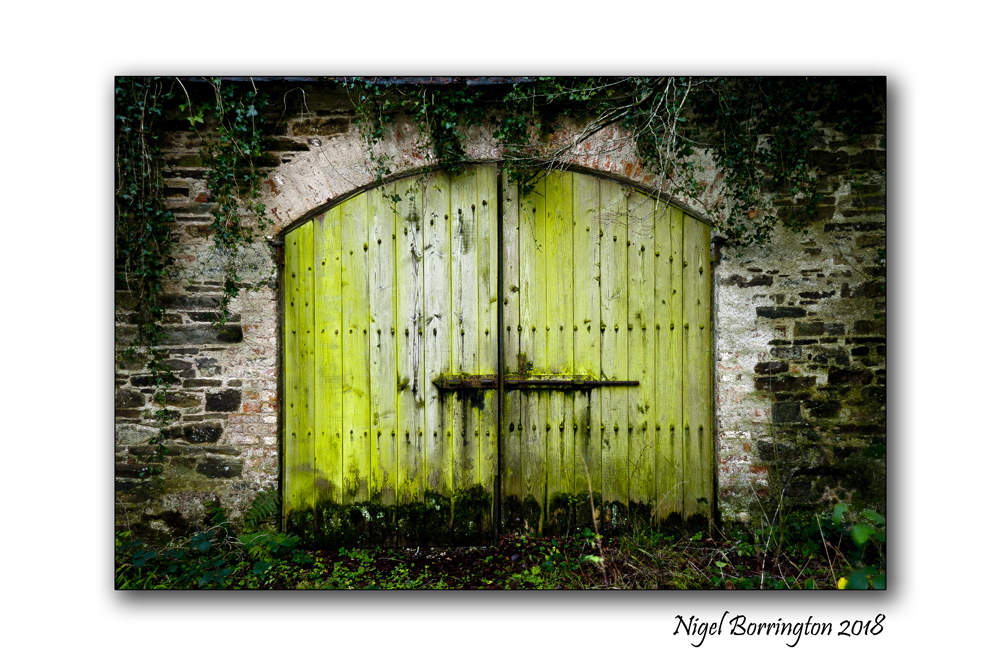
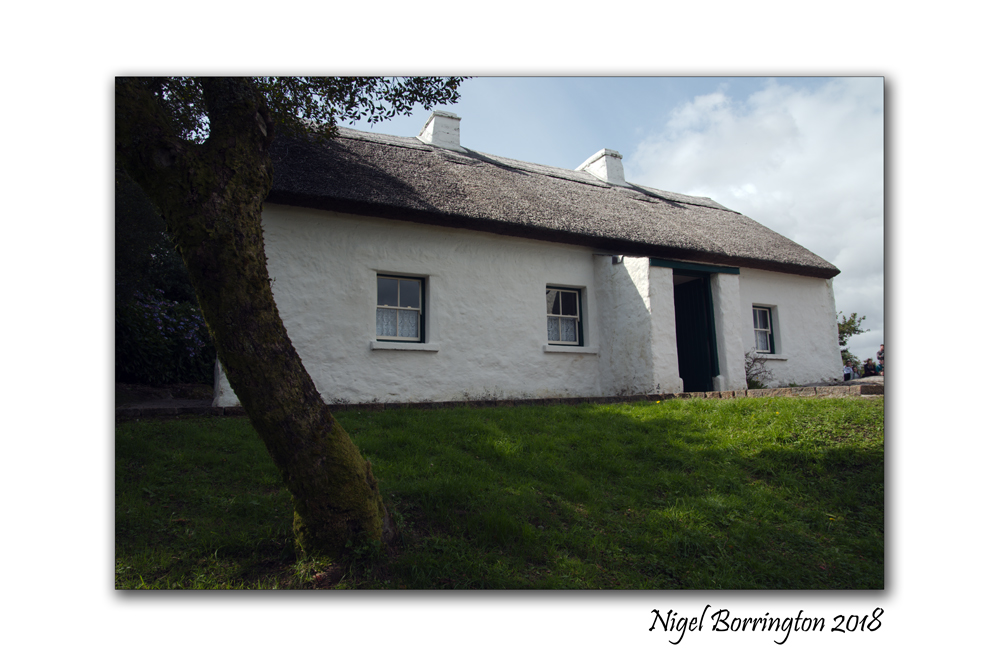


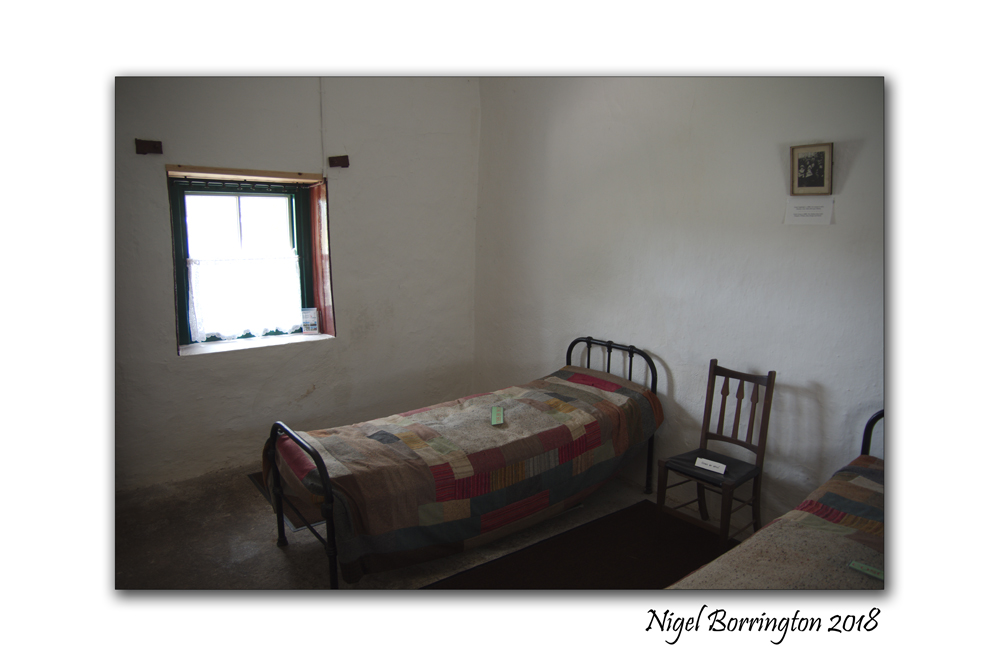








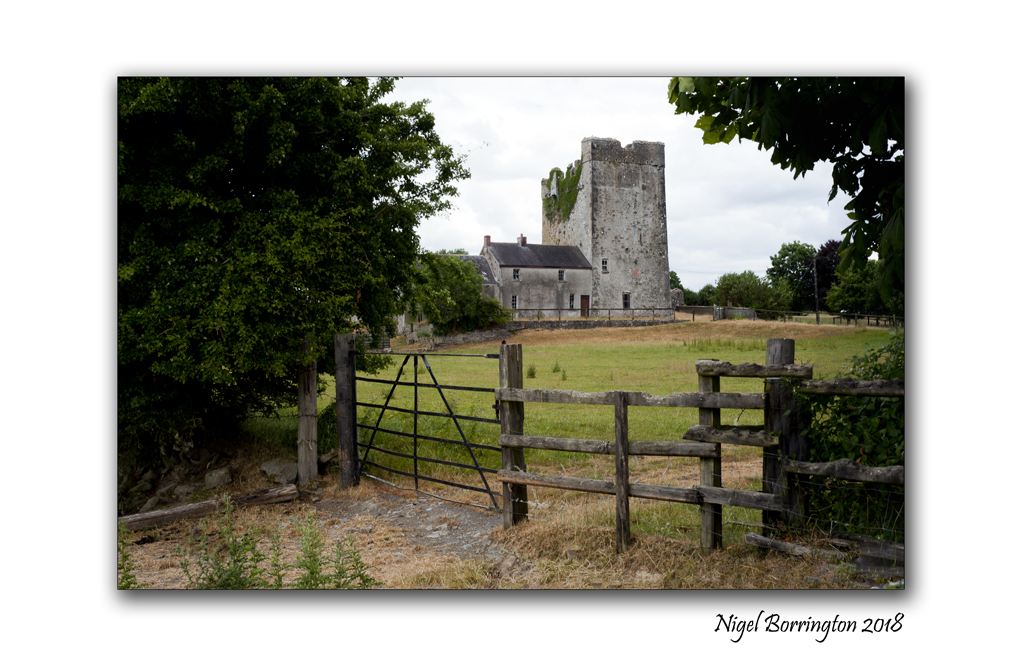



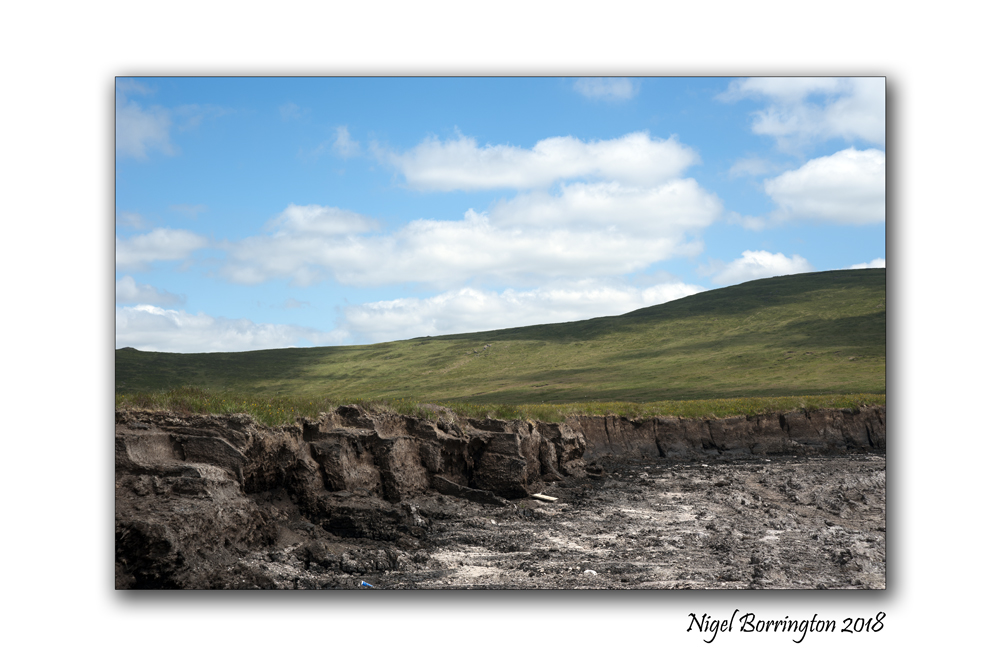



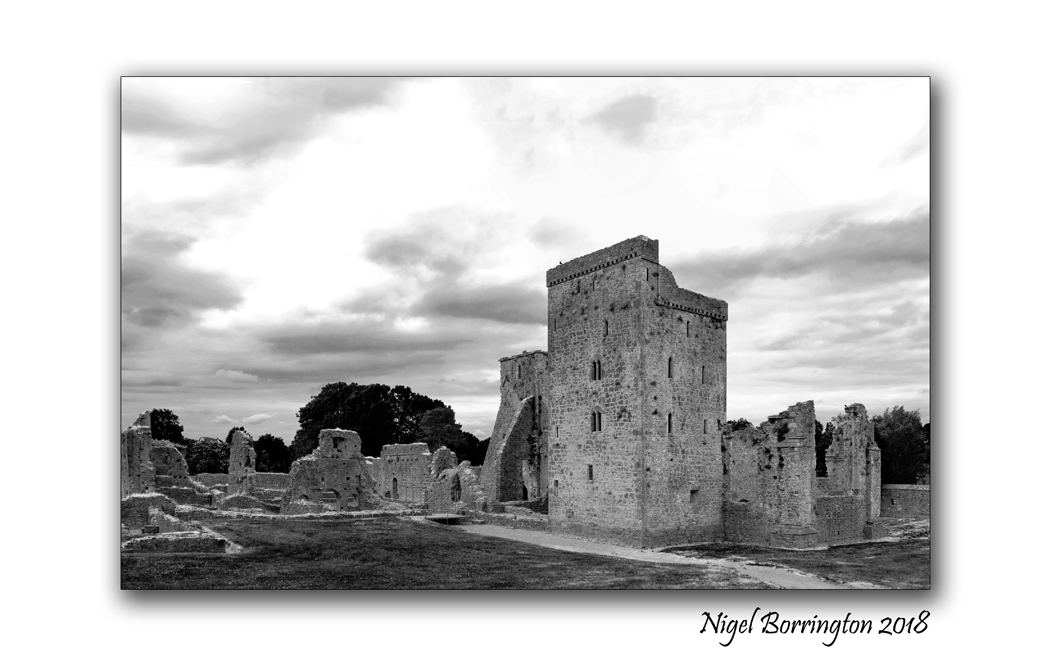
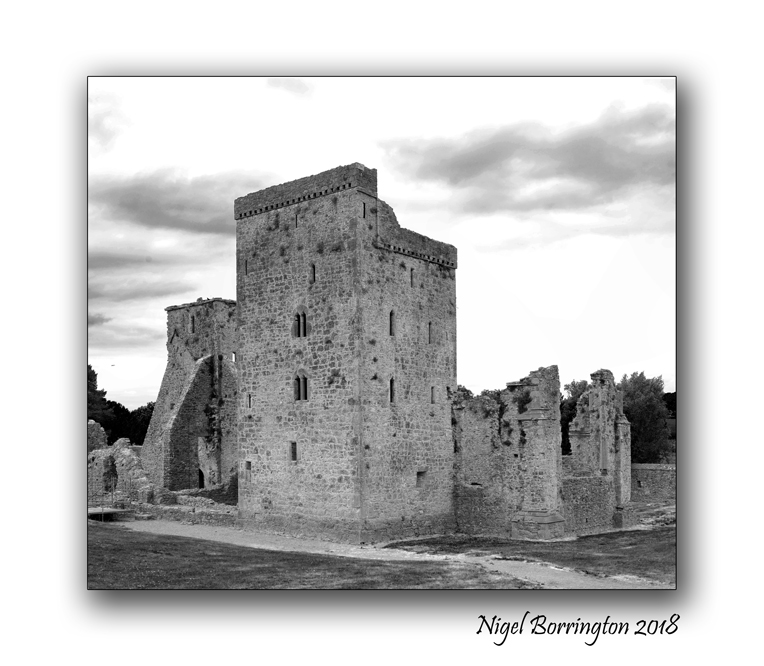
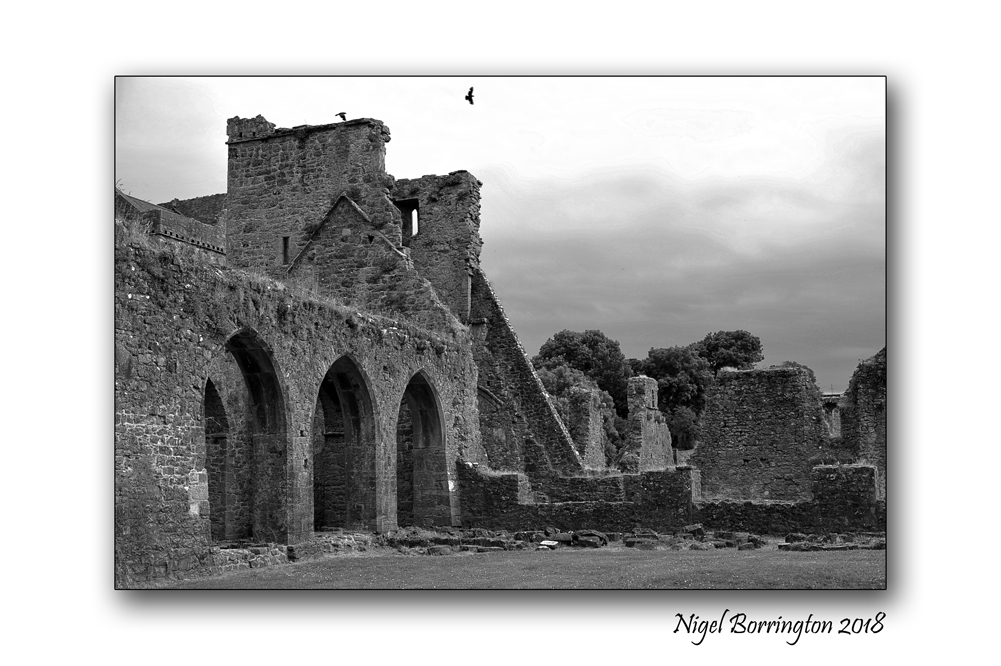




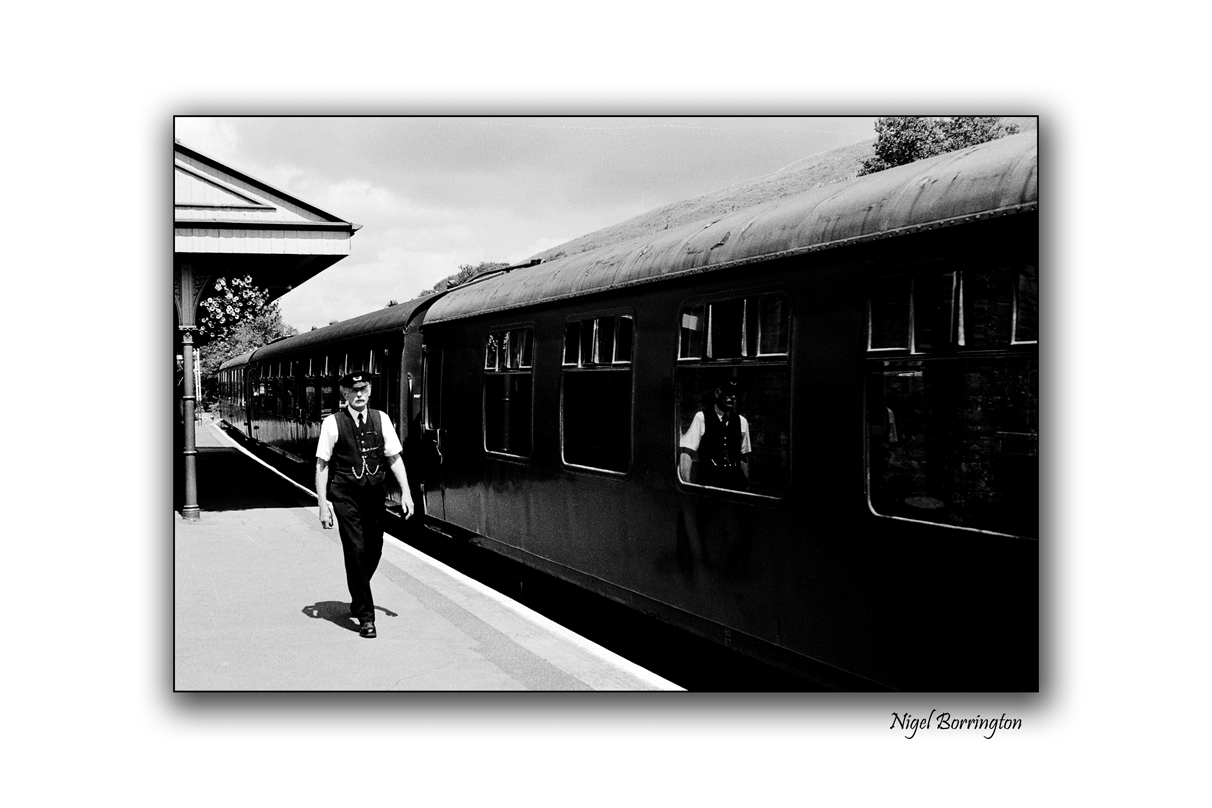
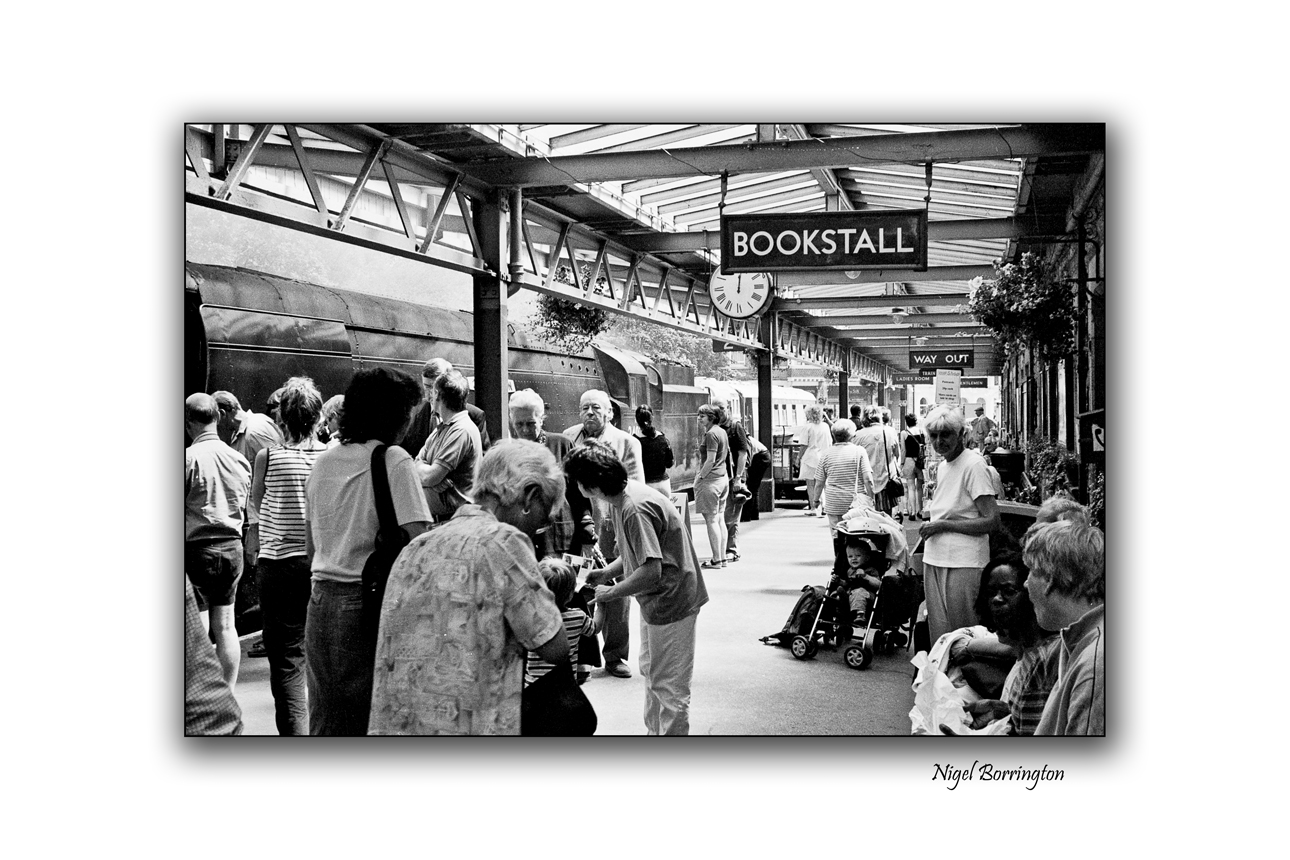

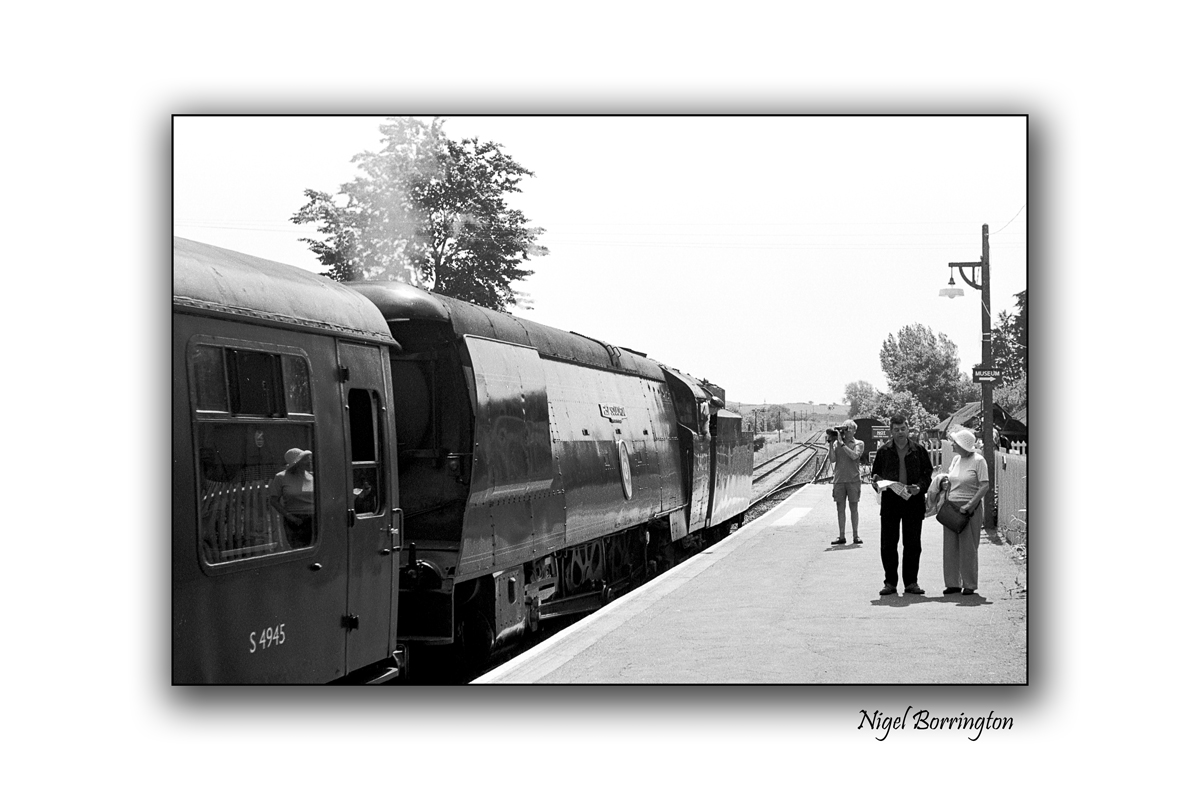
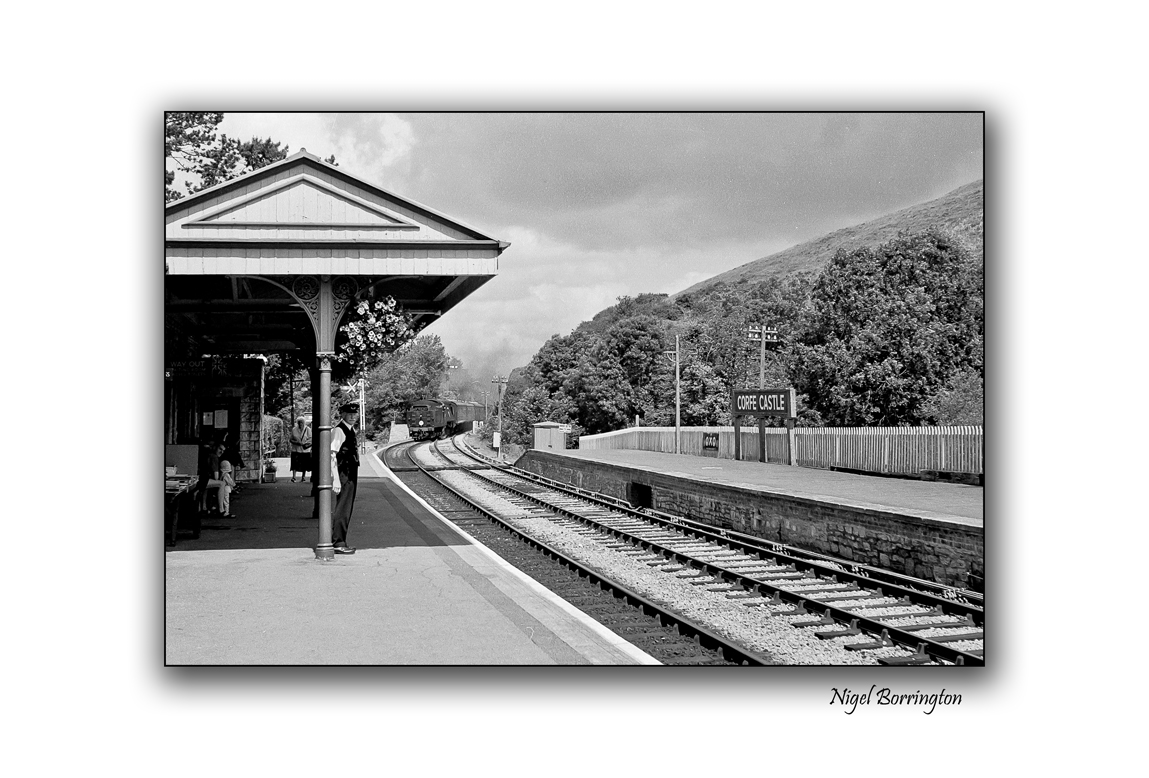
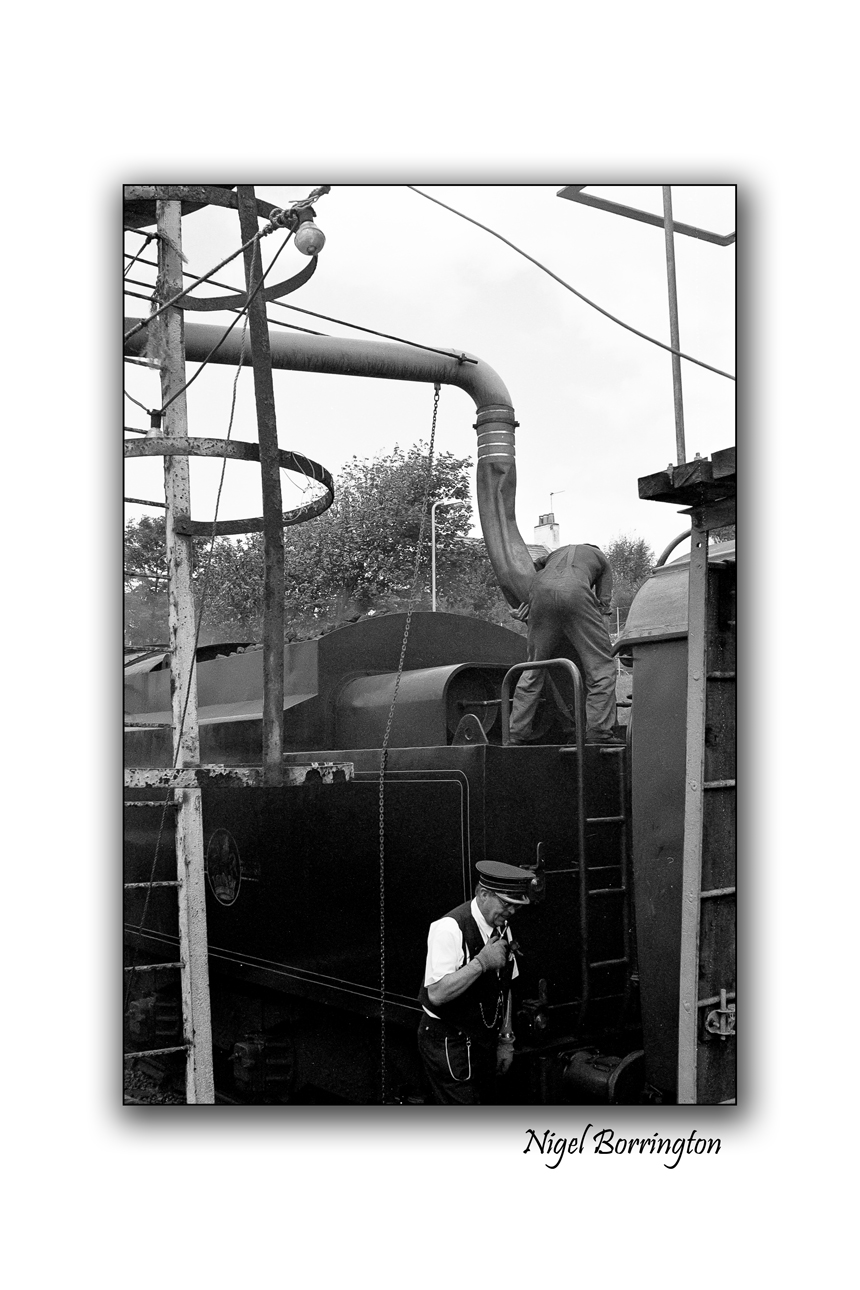

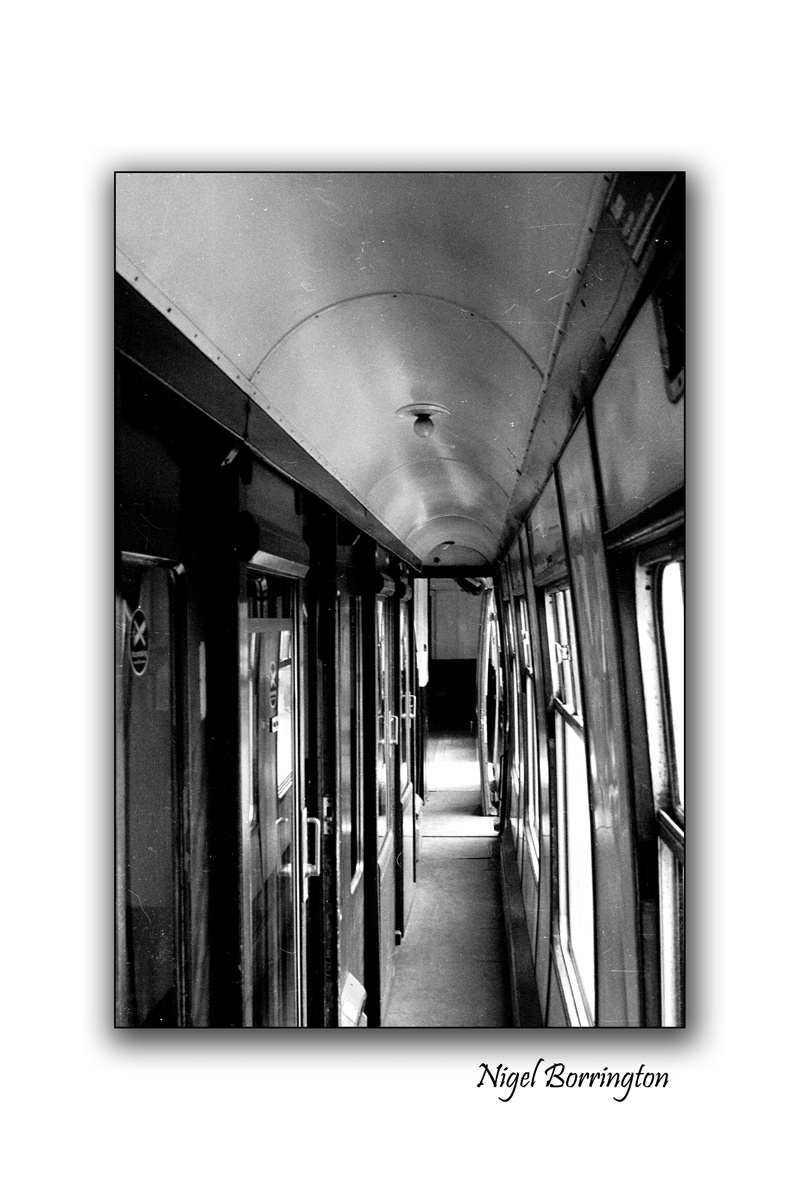
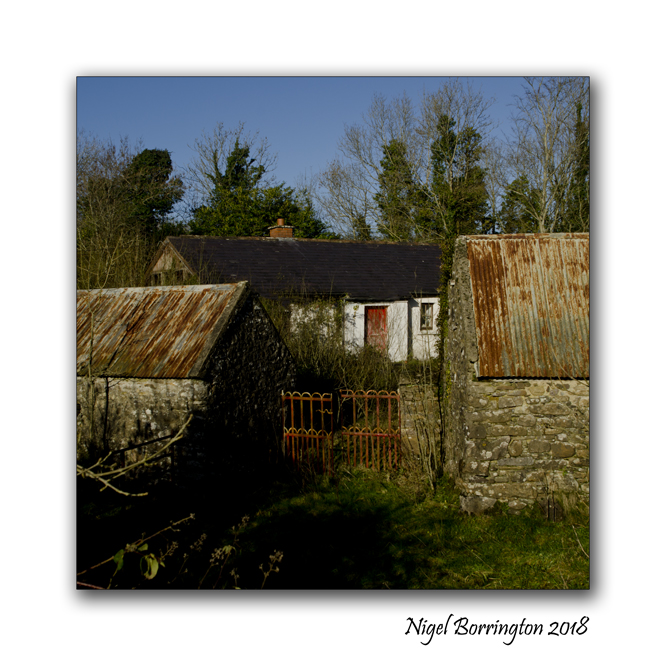

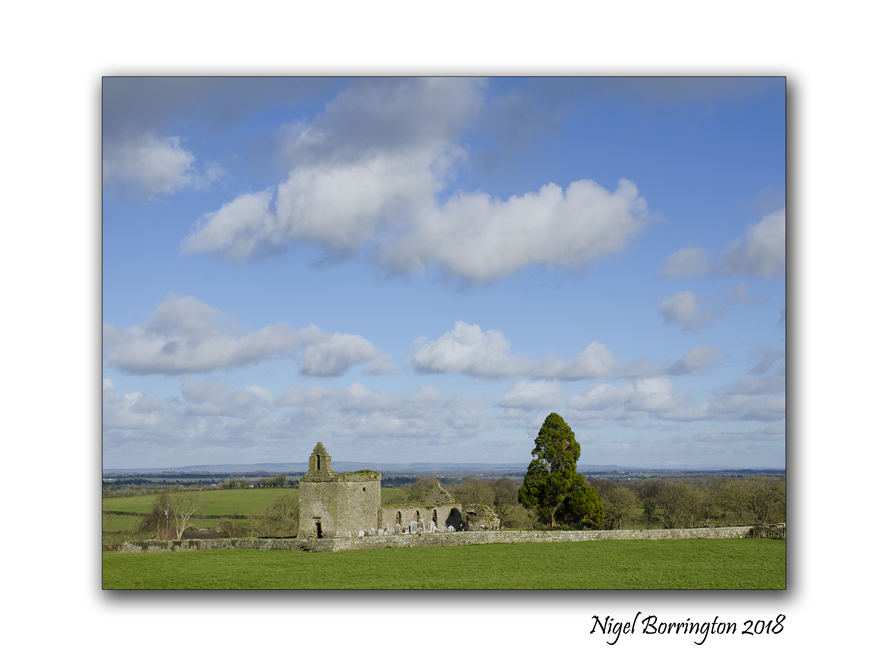






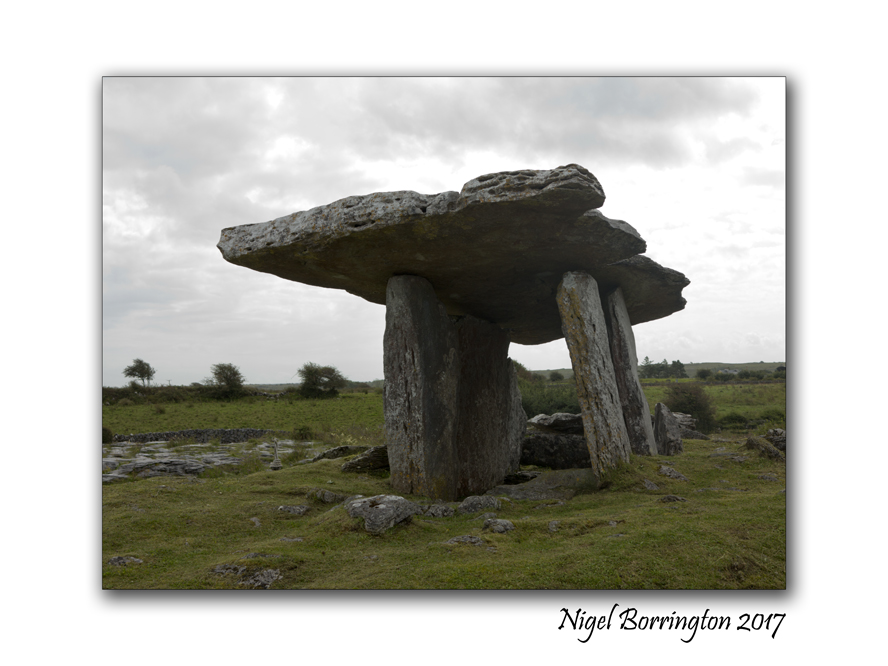
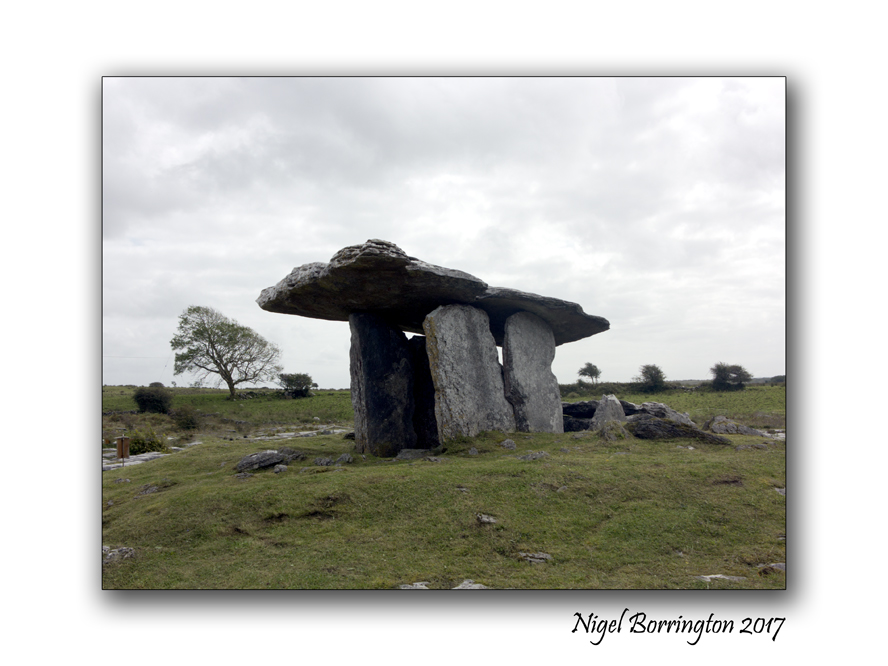












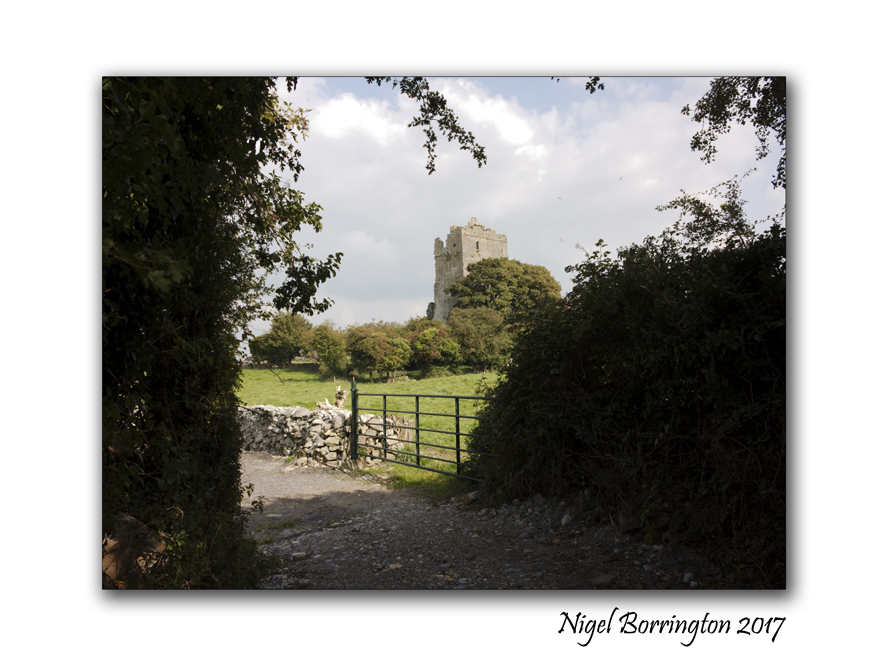










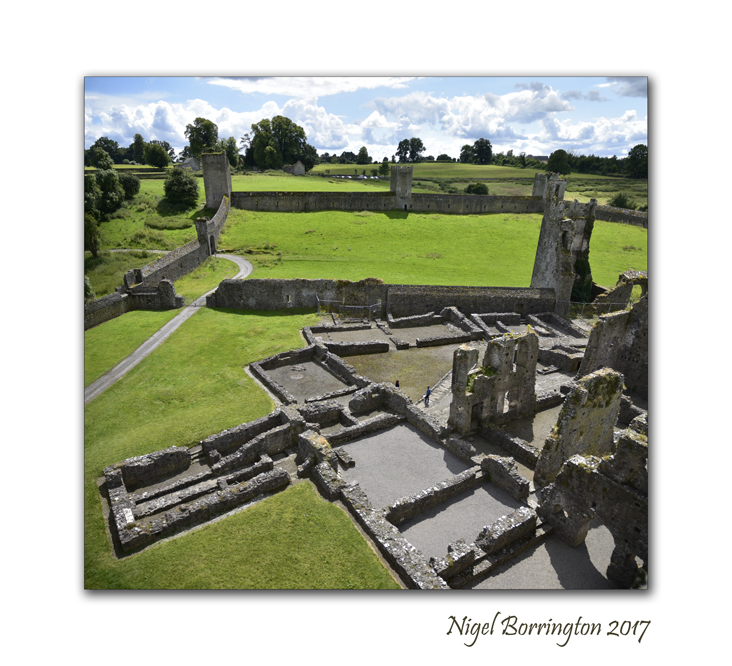


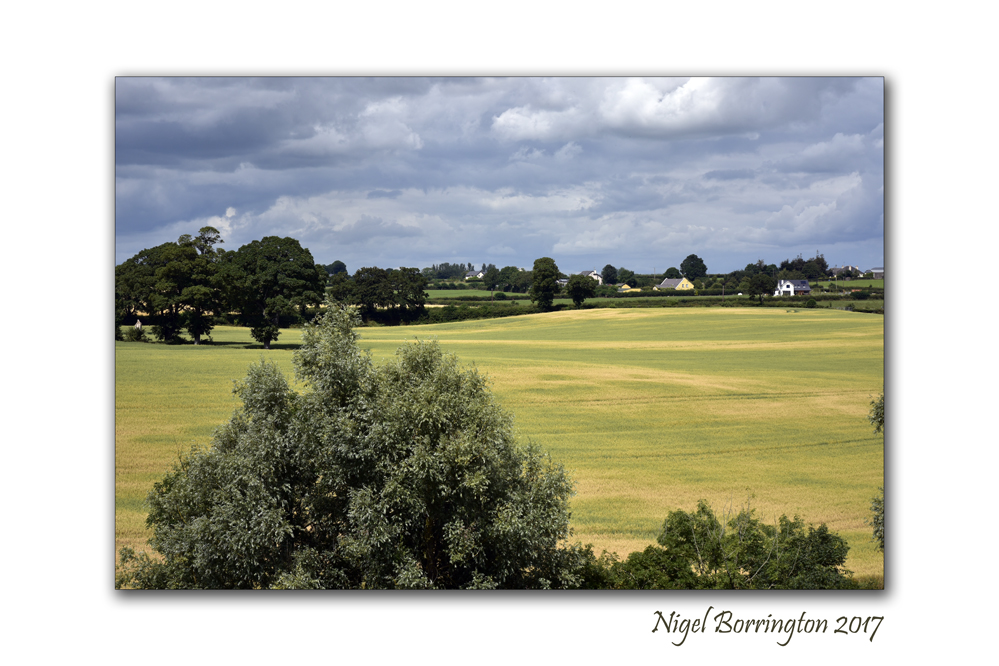
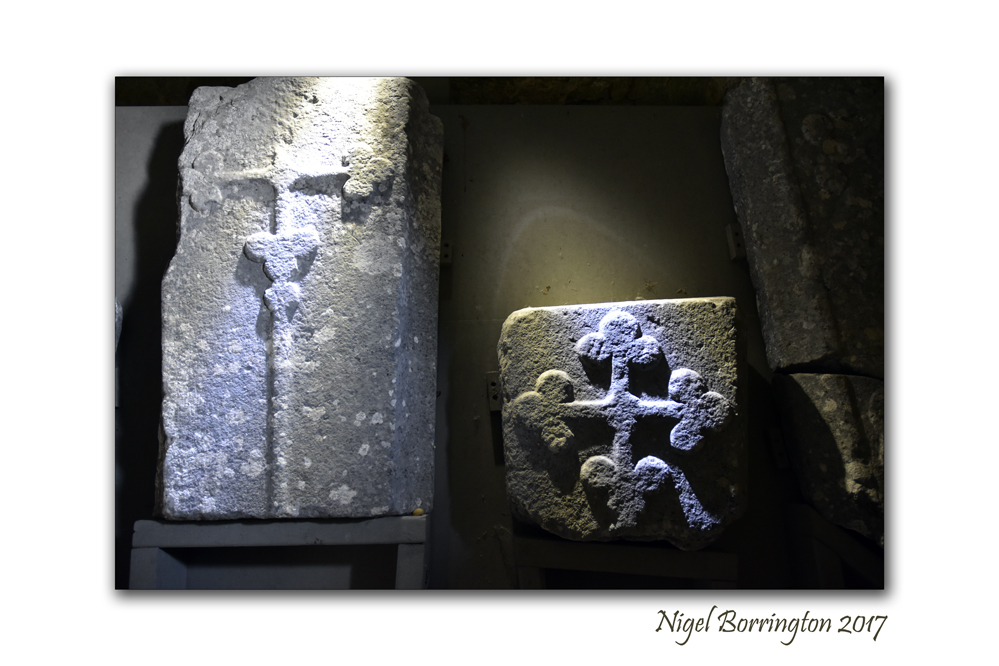
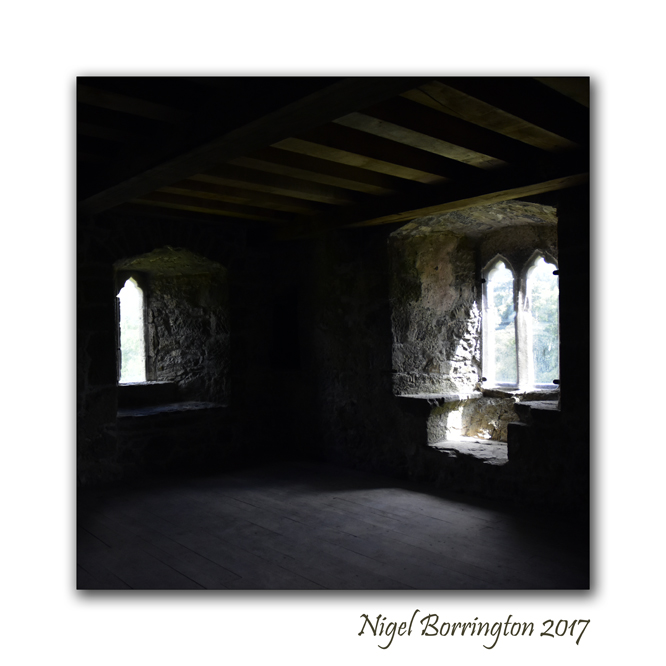
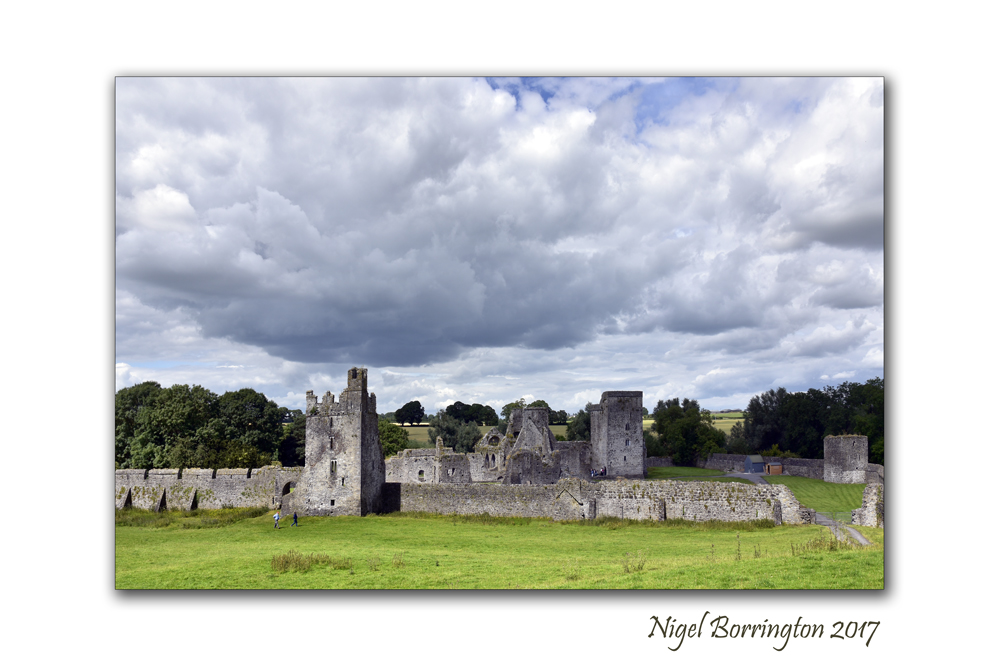
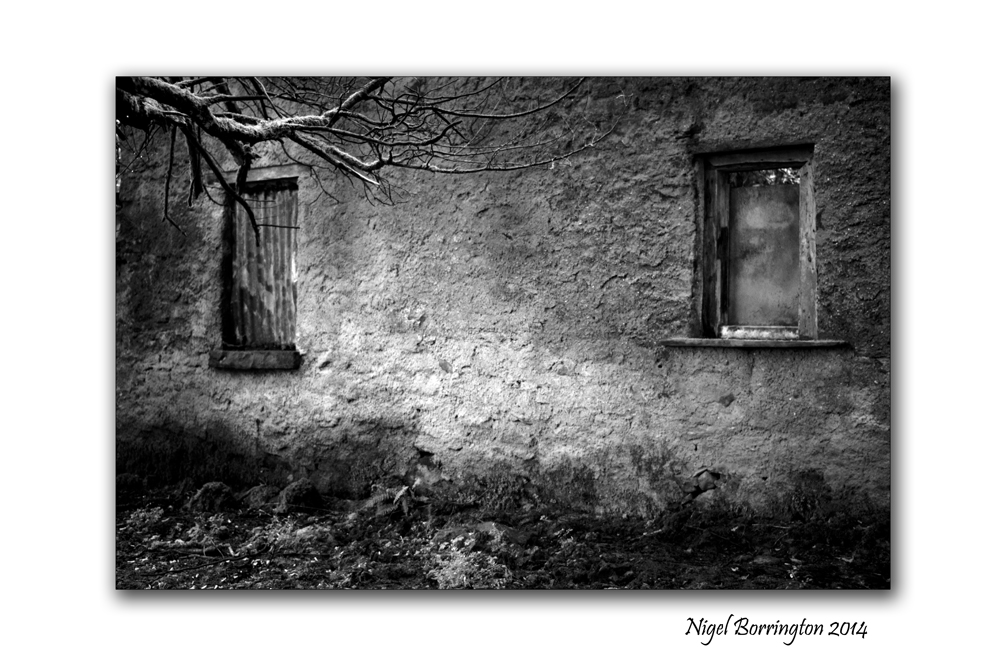

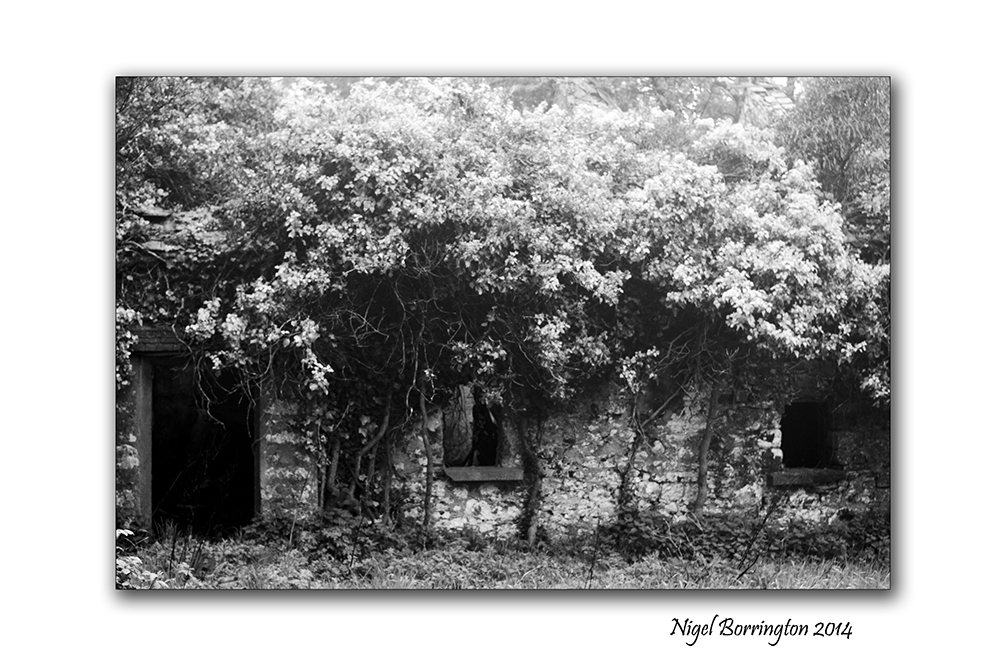
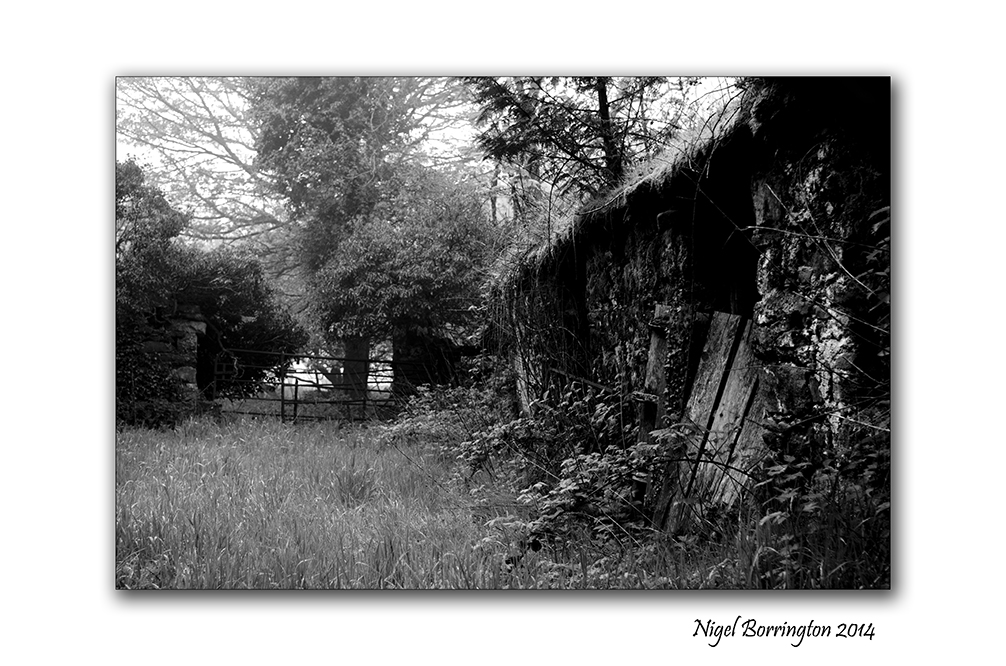






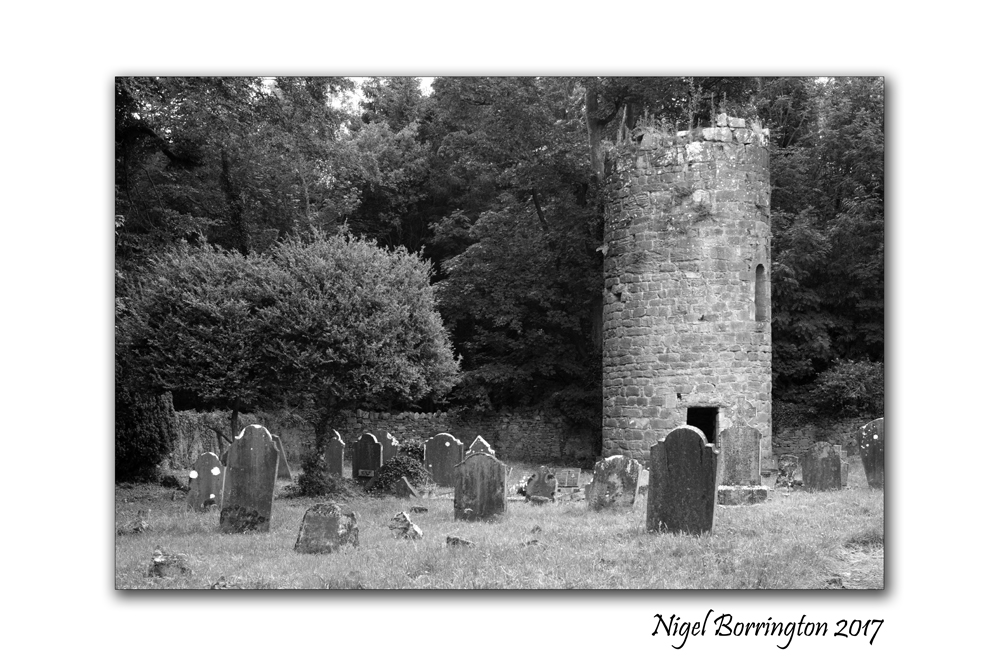

The places I remember, all my life ……
Altrincham, Greater Manchester, UK
Digital art work
I spent the early years of my life growing up in Altrincham in the greater Manchester area of northwest England. It was in these years, between the 1970’s and the late 1980’s that marked the end of the industrial age for the town.
This period left much of our local area with factories that became redundant and closed, some locations included empty land where factories once stood, a lot of these locations existed beside the Bridgewater canal.
I am currently working on a visual art project that is calling on my memories of these locations, working both digitally and with charcoal on paper, creating some compositions that reflect on this period of my life, places from my childhood. I am in my 50’s so this is not easy at times but I feel its a great exercise in visual storytelling…
Share this:
April 28, 2021 | Categories: art work, charcoal, Comment, Digital art work, Digital art work, drawings, Forgotten places, History, manchester, Solo images, Story telling gallery | Tags: Altrincham, charcoal, digital art, drawing, History, Industrial landsacpes, Industry, manchester, mypaint, Nigel Borrington, wacom | 1 Comment